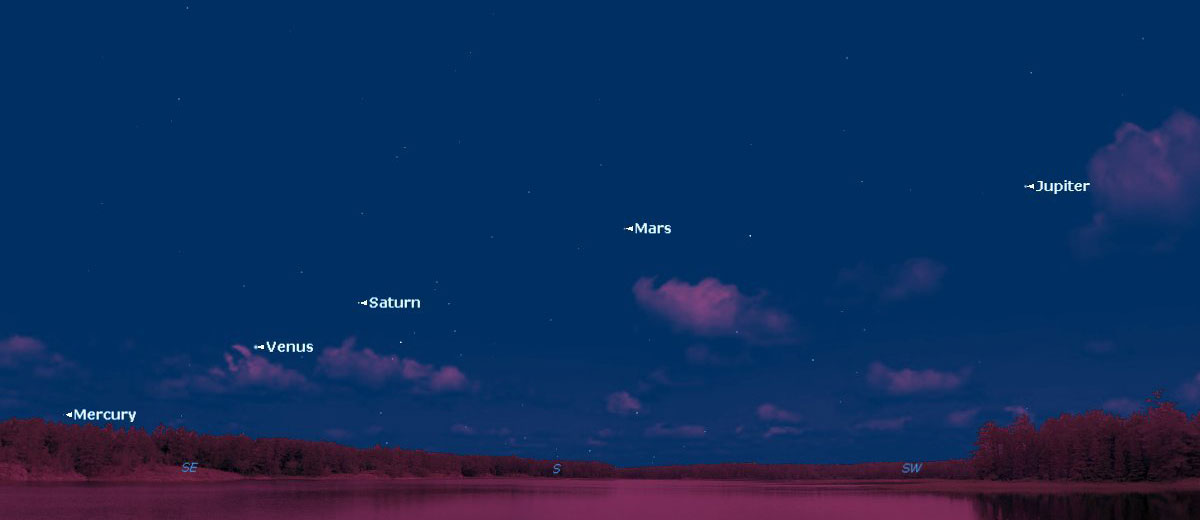Starting this week, and lasting until late February, sky-watchers will be treated to a rare planetary spectacle.
We’ll be able to see all five visible planets—Mercury, Venus, Mars, Jupiter, and Saturn—simultaneously in the morning sky. This hasn’t happened since 2005, and it’s particularly awesome because these planets are easy targets for star-gazers of all ages and levels of experience. Venus and Jupiter are the brightest planets in the sky, and you can use them as reference points to find the other, dimmer, planets.

Start by locating Venus. This planet, affectionately known as “Earth’s twin,” is the brightest object in the sky after the sun and moon. It will appear near the southeastern horizon, before dawn. Jupiter, the next-brightest planet, will be in the southwestern sky at about the same, gleaming with a steady yellow light against the background of stars.

Okay, so now that you know where Venus and Jupiter are, you can start looking for the other planets. Start by scanning the sky between Jupiter and Venus. You should be able to spot a small, red, star-like body in the southern sky. This is Mars. Don’t be disappointed if it seems dimmer than you were expecting; I was too. But hey, it’s still a planet, and don’t let its appearance take away from the thrill of seeing it!!!

Now draw an imaginary line from Mars back to Venus, in the southeastern sky. Saturn will be the brightest object shining approximately half-way between them. Lastly, scan the sky belowVenus to find planet number 5. Mercury will appear as a small, whitish object, hugging the southeastern horizon.
Let’s hope for clear skies!!!!
Feature Image Source: OregonLive.com
